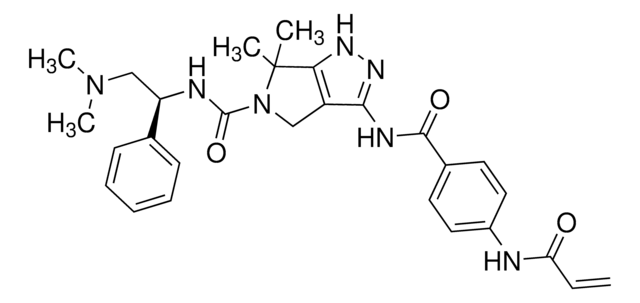M4667
(±)-Mevalonolactone
~97% (titration)
Synonym(s):
(±)-β-Hydroxy-β-methyl-δ-valerolactone, (±)-3-Hydroxy-3-methyl δ-valerolactone, DL-Mevalolactone, DL-Mevalonic acid lactone
About This Item
Recommended Products
assay
~97% (titration)
storage temp.
−20°C
SMILES string
CC1(O)CCOC(=O)C1
InChI
1S/C6H10O3/c1-6(8)2-3-9-5(7)4-6/h8H,2-4H2,1H3
InChI key
JYVXNLLUYHCIIH-UHFFFAOYSA-N
Looking for similar products? Visit Product Comparison Guide
General description
Application
- study the effect of statin on the prenylation of Ras and Rho GTPases
- analyse the isoprenoid biosynthesis pathways in Listeria monocytogenes
- study the the effects of statins on proliferation and migration of HUVECs (HGF-induced human umbilical vein endothelial cells)
Other Notes
Storage Class
11 - Combustible Solids
wgk_germany
WGK 3
flash_point_f
235.4 °F - closed cup
flash_point_c
113 °C - closed cup
ppe
Eyeshields, Gloves, type N95 (US)
Certificates of Analysis (COA)
Search for Certificates of Analysis (COA) by entering the products Lot/Batch Number. Lot and Batch Numbers can be found on a product’s label following the words ‘Lot’ or ‘Batch’.
Already Own This Product?
Find documentation for the products that you have recently purchased in the Document Library.
Customers Also Viewed
Articles
Cholesterol biosynthesis starts in the hepatic endoplasmic reticulum with acetyl-CoA, yielding 3-hydroxy-3-methylglutaryl-CoA via HMG-CoA synthase.
Our team of scientists has experience in all areas of research including Life Science, Material Science, Chemical Synthesis, Chromatography, Analytical and many others.
Contact Technical Service














